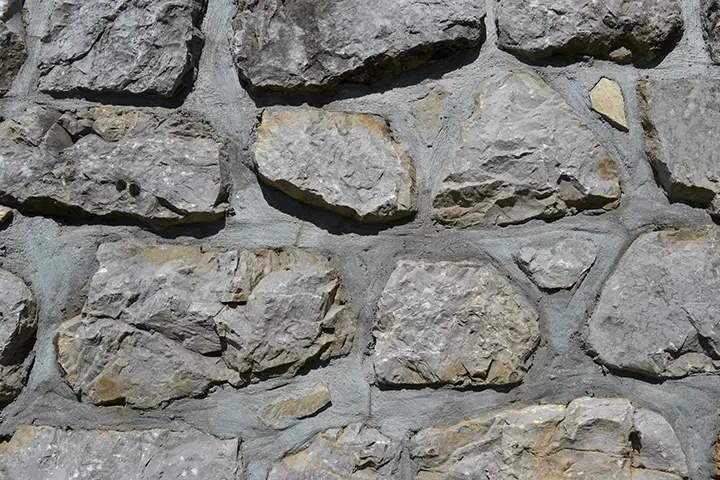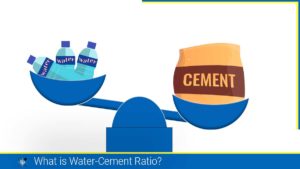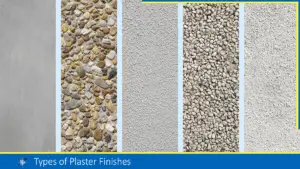Concrete is one of the versatile construction materials which can be used to construct anything from the pavement, and drain to the skyscraper structure. Plum concrete is another technique used for construction works which involve the use of large-size stones with cement concrete. Plum concrete is discussed in this article.
What is plum concrete?
Plum concrete is a form of concrete in which a large stone is used along the cement concrete. This type of concrete is known as Rubble concrete or Cyclopean Concrete. The concrete is formed by incorporating medium to large stones of size up to 300mm or even larger as filler.
The word plum refers to larger stones used in concrete. The plums are used to form mass concrete work and reduce the intensive use of plain concrete. Moreover, plums provide strength to the concrete. The plum used should be between 30-40% of the concrete volume. The types of stones used for the plum should be strong, hard and clean otherwise, it should conform to ASTM.
The grade of concrete intercepted to form plum concrete is usually M15 or less. Using a concrete grade more than M15 would be uneconomical as such concrete is used for the mass concrete, foundation, gravity walls and embankments.
The cement concrete acts as a binder in to bind the plum in these concrete works.
Also, read: What is Cement Concrete?: Comprehensive Guide and 2 Types (PCC and RCC)
Requirement of Good Plum
To achieve quality workmanship and quality work of the concrete the following are the identified requirements of the plum:
- Boulders used in the plum should be 200-300 mm
- The plum should have at least 100 Kg/sqm crushing strength value
- It should consist of aggregates up to 25mm.
- The plum volume should not exceed 40% of the concrete volume.
- The gaps between the plums should be less than 150 mm.
Also, read: 12 Properties of Good Building Stone: Comprehensive Guide
Placement of Plum in Concrete
The plum stone should be washed and surface water should be dried before being embedded in the concrete. The stone when placed should be placed at least 300mm from the exposé surface and 150mm between the adjacent surface. The stones shall not be dropped in place, but each stone shall be laid and carefully embedded to avoid any injury to the forms or adjacent masonry and in such a manner that no planes of weakness or unnecessary seams occur in the structure.
Plum Concrete VS Plain Cement Concrete (PCC)
Plain cement concrete is the simplest form of concrete and one of the most used concrete in construction. It is prepared by mixing all the essential materials such as cement, aggregate (fine and coarse) and water. Whereas, plum concrete is the type of concrete in which medium to large stones are used as filler material in place of coarse aggregates.
Advantages of Plum Concrete
There are numerous advantages of plum concrete listed on the internet. We have chosen the best which are genuinely acceptable as the advantage of the concrete.
- Reduces the cost for the concrete work in the case of mass concrete work and large quantities of concrete are needed.
- The plums used are strong and provide the strength of the concrete.
- It has high resistance to wear and tear. It is also a good fire-resistant and waterproof material.
Disadvantages of Plum Concrete
Some of the disadvantages of plum concrete are as follows:
- Arrangement and adjusting the rubble/stone/plum takes time and requires skilled labour.
- It is difficult to lay the next layer of plum in the concrete when the concrete is freshly poured into the mould/formwork.

Also, read: Construction of Cement Stone Masonry Retaining Walls
Uses of Plum Concrete
Plum concrete has multiple uses in the construction field. This is chosen over ordinary cement concrete or just plain cement concrete. The uses are as follows:
- Levelling of uneven surface
Plum concrete is used for levelling the uneven surface of the ground which is intended for construction workers.
When the ground surface is sloppy and for levelling the ground. Also for levelling the ground for laying the footing or foundations of the building or any other structure.
- Construction of Dams and Bridges.
Plum concrete with the nature of mass concreting works is used for the construction of gravity dams. Using plum concrete for the dam can reduce the initial hydration temperature of the concrete.
In bridge construction works, it is mainly used for abutment and wing wall construction.
- Road embankment
The construction of the embankment requires a huge quantity of concrete. Thus choosing a suitable size plum may reduce the requirements of a huge quantity of concrete.
- Water channels
Water channels are under constant erosion corrosion effect due to the continued flow of silt in the water. Thus, building a strong base for the channel is demanded. For that matter, plum concrete is used for the purpose.
FAQs:
Q: What is Plum concrete?
Ans: Plum concrete is a type of concrete that incorporates large stones or boulders, known as “plums,” into the concrete mix. This reduces the amount of cement and fine aggregate required, making it a cost-effective solution for large-scale construction projects where strength is secondary to mass and volume.
Q: What is the ratio of plum or metal stone used in the plum concrete?
Ans: The typical mix ratio of concrete to plums can vary, but a common ratio is 60% concrete to 40% plums by volume. The exact ratio may be adjusted based on the specific requirements of the project.
Q: What is cyclopean concrete?
Ans: As per ACI Concrete Terminology, cyclopean concrete is a mass concrete in which large stones, each of 100 lb (50 kg) or more, are placed and embedded in the concrete as it is deposited.
References:
- Plum concrete. (n.d.). Designing Buildings. https://www.designingbuildings.co.uk/wiki/Plum_concrete
- Plum concrete: Applications and procedure of laying. (2021, September 1). theconstructor.org. https://theconstructor.org/concrete/plum-concrete-application-laying/558017/
- The Editors of Encyclopaedia Britannica. (1998, July 20). Cyclopean masonry | Ancient, Stone, Architecture. Encyclopedia Britannica. https://www.britannica.com/technology/cyclopean-masonry
![]()







